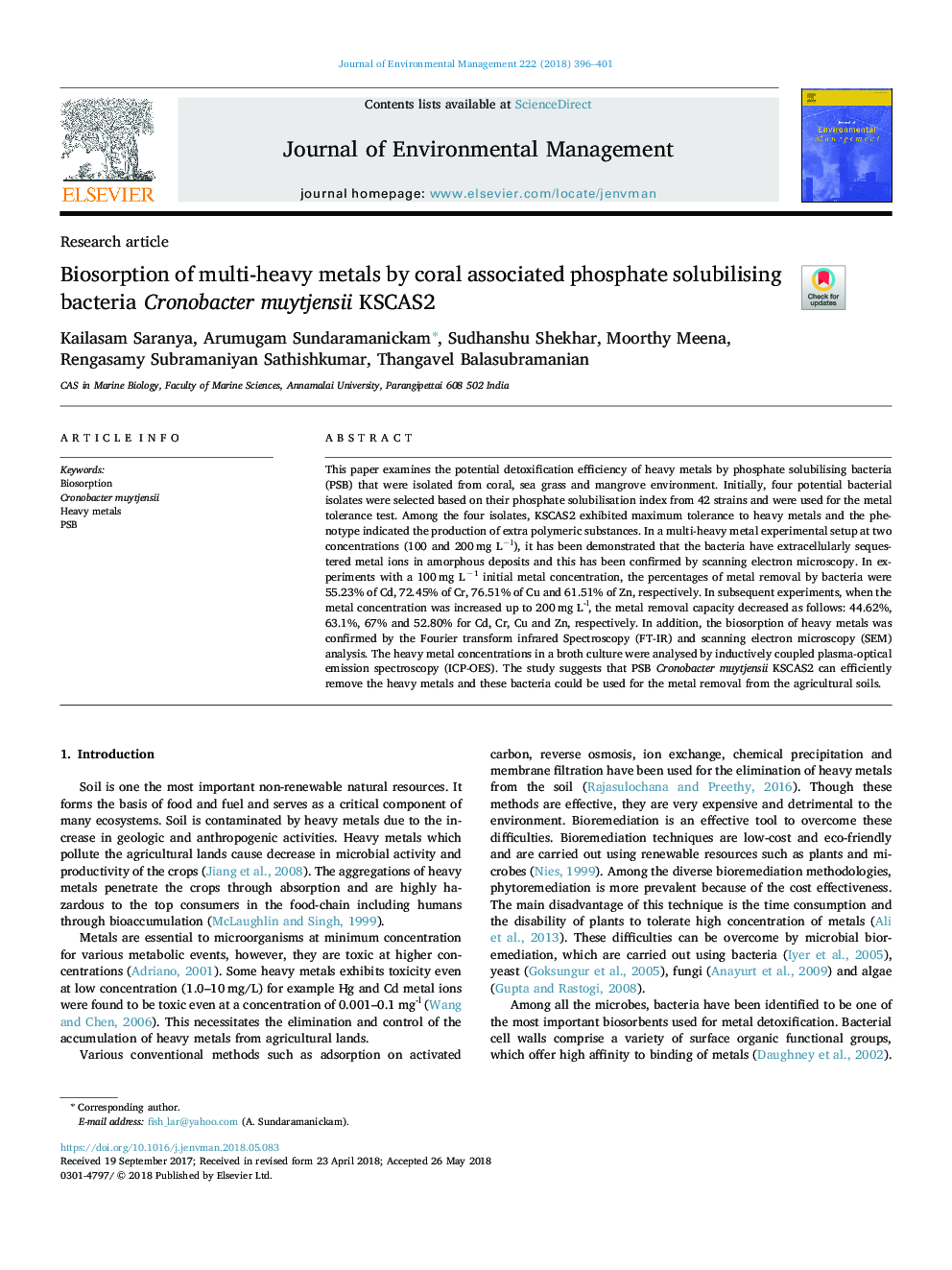| Article ID | Journal | Published Year | Pages | File Type |
|---|---|---|---|---|
| 7476301 | Journal of Environmental Management | 2018 | 6 Pages |
Abstract
This paper examines the potential detoxification efficiency of heavy metals by phosphate solubilising bacteria (PSB) that were isolated from coral, sea grass and mangrove environment. Initially, four potential bacterial isolates were selected based on their phosphate solubilisation index from 42 strains and were used for the metal tolerance test. Among the four isolates, KSCAS2 exhibited maximum tolerance to heavy metals and the phenotype indicated the production of extra polymeric substances. In a multi-heavy metal experimental setup at two concentrations (100 and 200â¯mg Lâl), it has been demonstrated that the bacteria have extracellularly sequestered metal ions in amorphous deposits and this has been confirmed by scanning electron microscopy. In experiments with a 100â¯mg Lâ1 initial metal concentration, the percentages of metal removal by bacteria were 55.23% of Cd, 72.45% of Cr, 76.51% of Cu and 61.51% of Zn, respectively. In subsequent experiments, when the metal concentration was increased up to 200â¯mg L-l, the metal removal capacity decreased as follows: 44.62%, 63.1%, 67% and 52.80% for Cd, Cr, Cu and Zn, respectively. In addition, the biosorption of heavy metals was confirmed by the Fourier transform infrared Spectroscopy (FT-IR) and scanning electron microscopy (SEM) analysis. The heavy metal concentrations in a broth culture were analysed by inductively coupled plasma-optical emission spectroscopy (ICP-OES). The study suggests that PSB Cronobacter muytjensii KSCAS2 can efficiently remove the heavy metals and these bacteria could be used for the metal removal from the agricultural soils.
Keywords
Related Topics
Physical Sciences and Engineering
Energy
Renewable Energy, Sustainability and the Environment
Authors
Kailasam Saranya, Arumugam Sundaramanickam, Sudhanshu Shekhar, Moorthy Meena, Rengasamy Subramaniyan Sathishkumar, Thangavel Balasubramanian,
